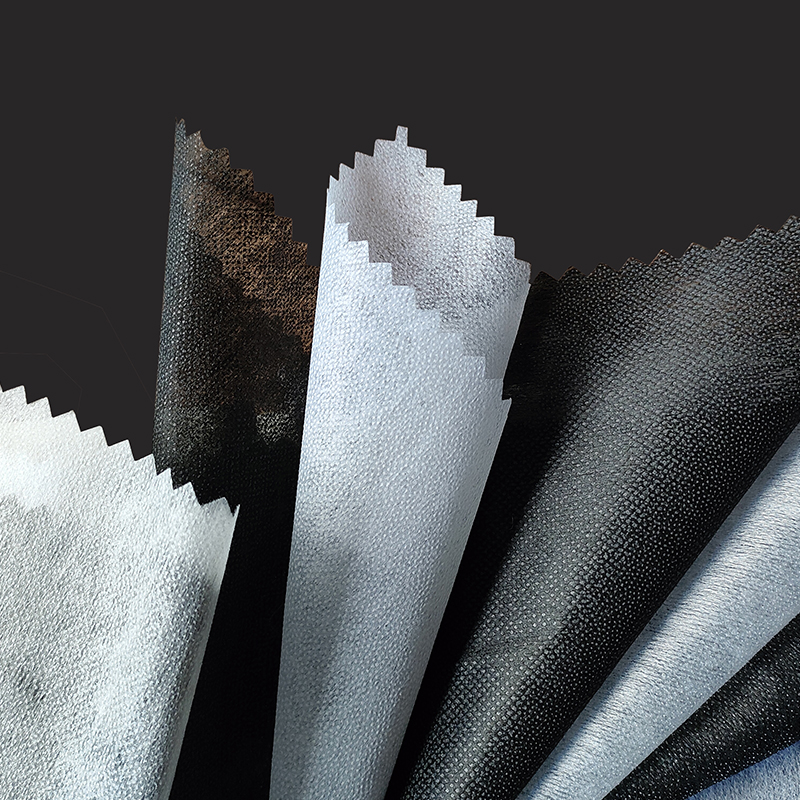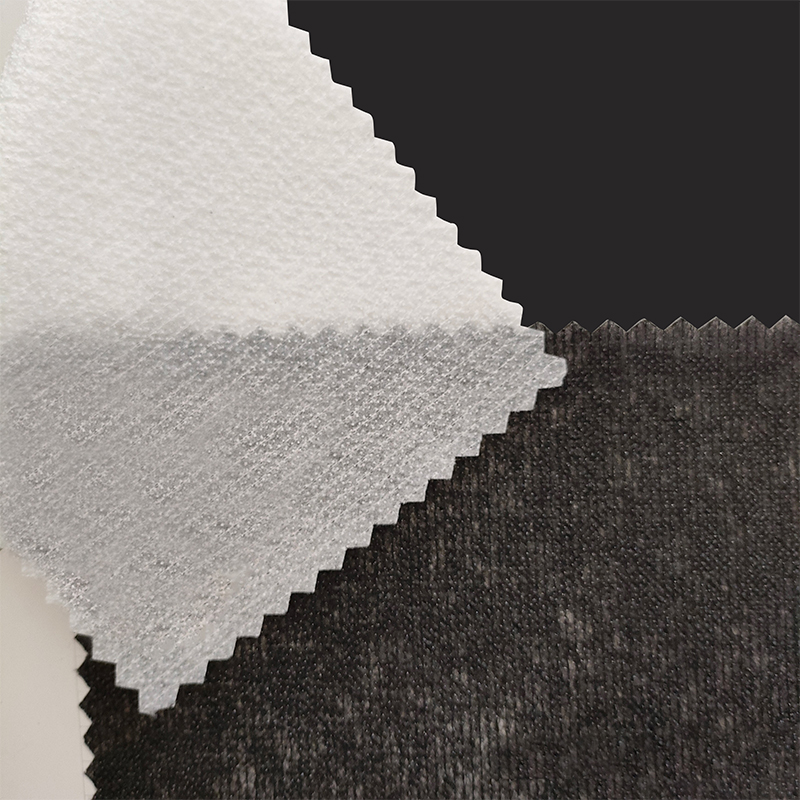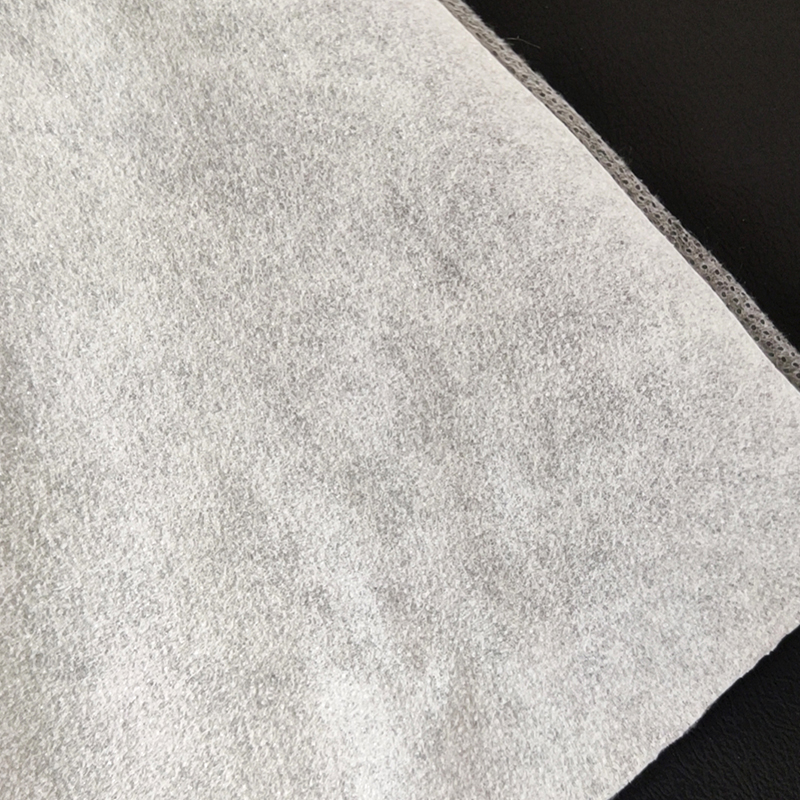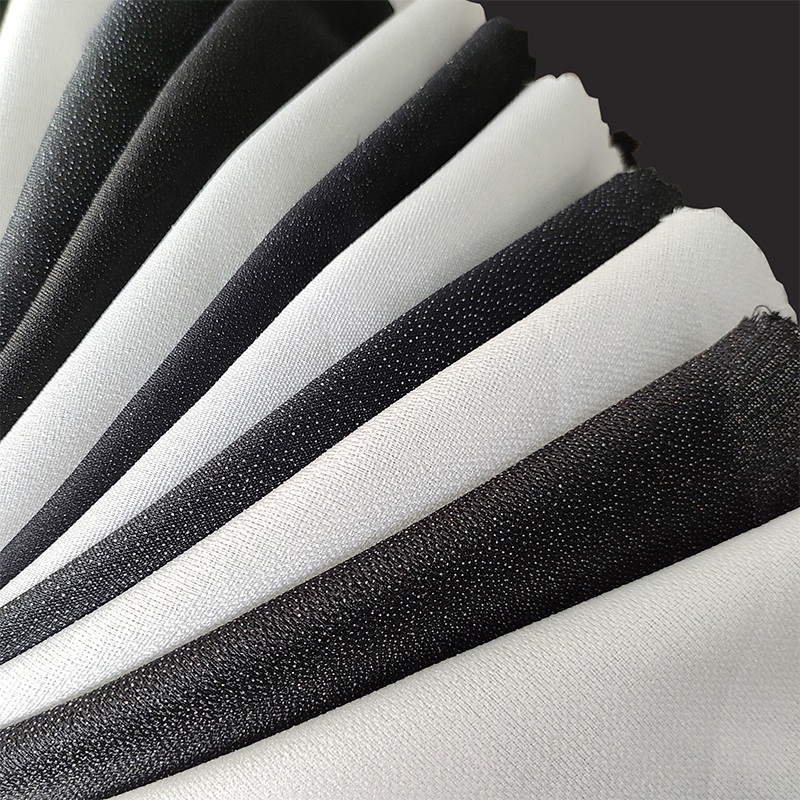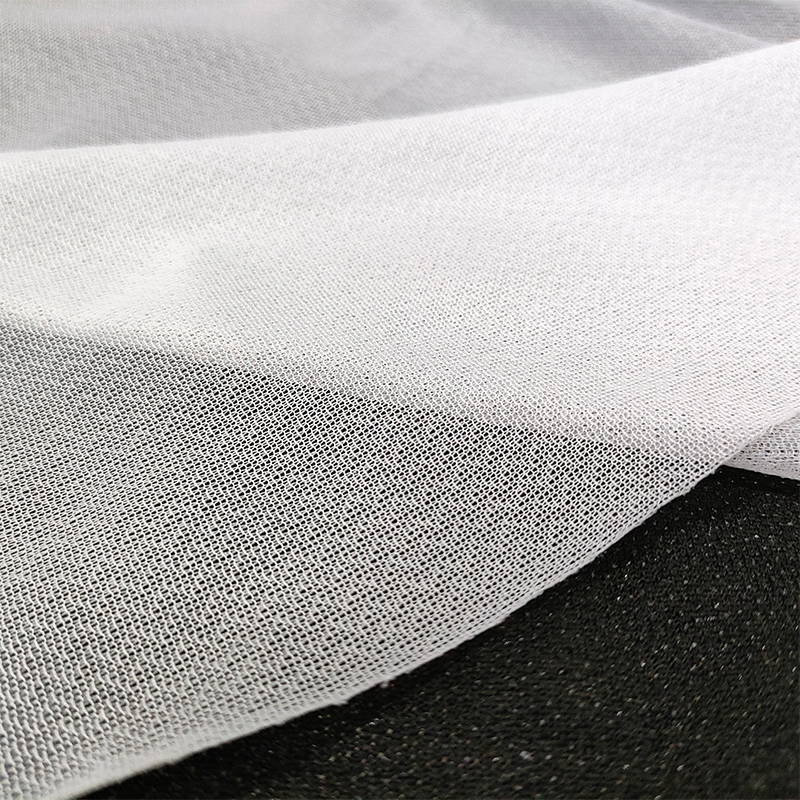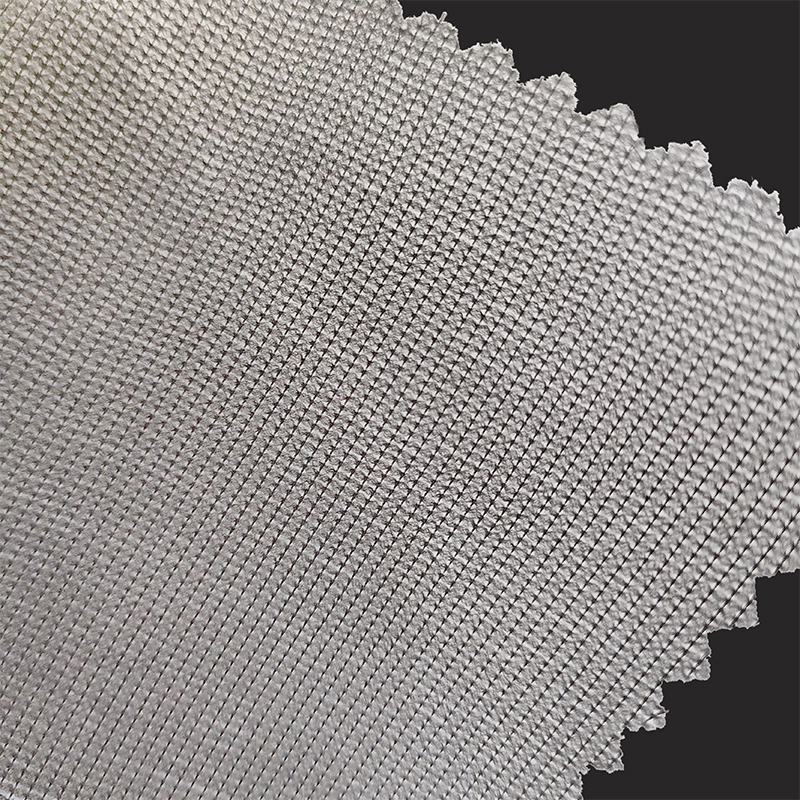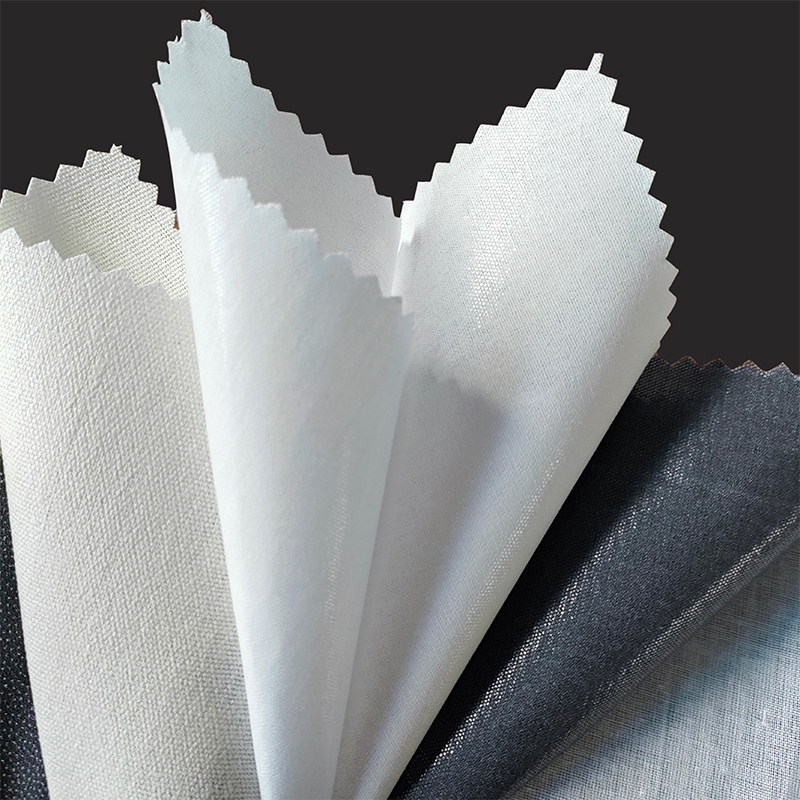Interlining vs. Interfacing: Industry Truths
1. Core Purpose
Interfacing: Reinforces specific small areas (collars, cuffs, buttonholes) to prevent stretching or sagging.
Interlining: Adds structure, insulation, or body to entire sections (curtain panels, jacket fronts, bags) for shape or thermal control.
2. Material Weight & Rigidity
| Type | Feel/Hand | Typical Use |
|---|---|---|
| Interfacing | Lightweight, subtle | Shirt collars, patch pockets |
| Interlining | Medium to heavyweight | Winter coats, upholstery, drapes |
3. Application Scope
Interfacing:
Localized patches (e.g., behind buttons, zipper plackets).
Rarely visible; disappears into seams.
Interlining:
Covers broad areas (e.g., entire curtain panel, full suit front).
Can be a design feature (e.g., padded interlining in quilted jackets).
4. Bonding Methods
Shared Techniques: Both use fusible (iron-on) or sew-in options.
Key Difference: Interlining is often loose-laid in home decor (e.g., curtains float freely between fabric layers).
5. Regional Terminology Trap
UK/EU: "Interlining" = heavyweight insulator (e.g., curtain flannel). "Interfacing" = lightweight garment stabilizer.
US: Terms often used interchangeably, causing confusion. Pro tip: Check context—"curtain interlining" always means insulation layer.
6. When They Overlap
Blurred Lines: Midweight fusible types (e.g., 60gsm) work as both interfacing and interlining.
Exception: Tailoring’s hair canvas—called "interlining" but functions as heavy interfacing for suit collars.
7. Consequences of Confusion
Using interfacing as curtain interlining → Curtains hang flat, no thermal benefits.
Substituting interlining in collars → Jacket collar feels like cardboard.
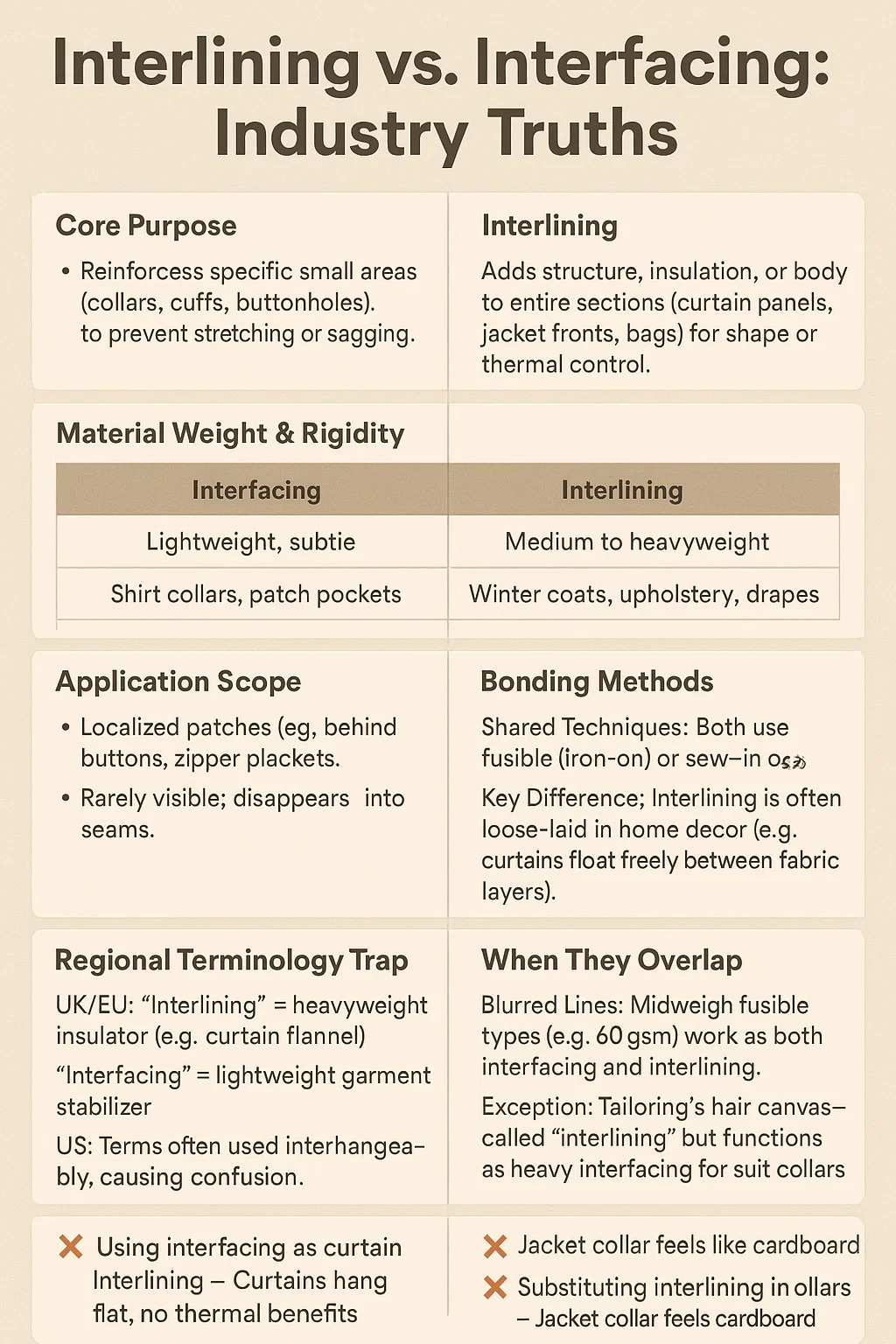

 English
English Español
Español Türk
Türk